September 2014
The first half of the month was spent in Garfagnana, a region in Northern Tuscany. Their summer can be encapsulated in one word: pioggia. Even though that translates rather prosaically in English as rain, it is nothing like English misty rain. The Tuscan downpours are often accompained with dramatic claps of thunder and flashes of lightning (and buckets and buckets of water). The old traditional house that we rented (in a rural village, population = 16) had a vegetable garden attached for our shared use with the owners. A quick look around confirmed that too much pioggia is not good for Mediterranean summer veg – like tomatoes, peppers, aubergines – that thrive on hot summer sun. If you look close enough in the picture, you can see one lone tomato clinging to a rotting vine. The locals were also concerned by the affects of rain on the quality of grapes that grew everywhere around our tiny village. This, obviously, does not bode well for the 2014 vintage.
However, there is still hope for the region’s wine. We visited Podere Còncori, an organic, “biodynamic”, vineyard which relies on the intimate knowledge of the land. Their vines on slopes face the sun and the soil conditioned to soak up the water and reflect back the light. The grapes looked full and ripe, free of mildew and were just beginning to be harvested when we visited. By the way, they make exceptional wine and are one of the Tuscan vineyards listed in the Slow Wine guide.
We arrived home (with a few cases of Còncori wine) to a distinct autumnal feel. The leaves on the early Bluecrop blueberries had turned a dramatic red and were beginning to fall.
However, my new Ozark Blue blueberry was just beginning to produce ripe fruit. But then, the variety is known as a late cropper. It is doing very well, so I might have a look around the rest of the garden to see if I can find space for more plants next year.
The Autumn Bliss raspberries were burgeoning with fruit – some a tad overripe even though our son faithfully picked and froze packets of raspberries while we were away. I can see these will continue well into October.
Also, the quinces were at their peak.
And the fennel seeds were nice and plump – ready to be picked and dried.
Along the far side of the house the crabapple tree still thrives amidst the jungle of ferns (purposely planted) and the brambles (not purposely planted). It is festooned with small yellow apples – just ripe for picking.
Tasks to be done:
- Prune the fruit trees and shrubs.
- Repot the tender herbs such as tarragon an lemon verbena for moving indoors for the winter.
- Harvest the quinces and crabapples.
| Around My Edible Garden is my monthly diary entry detailing what is happening in my garden this past month, part of the Garden Share Collective (GSC), maintained by Lizzie@strayedtable. A chronological listing of my garden blog posts is listed Diaries in the Menu bar. |
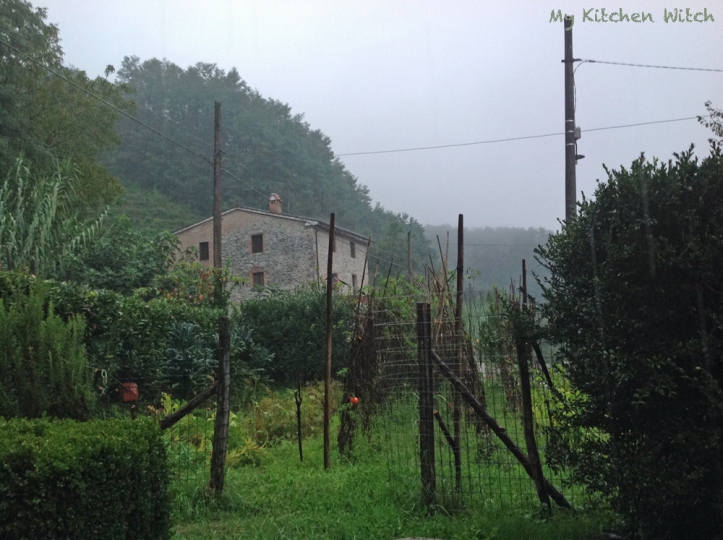
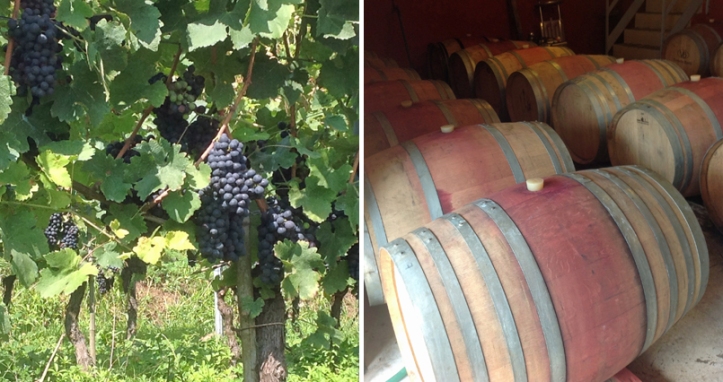
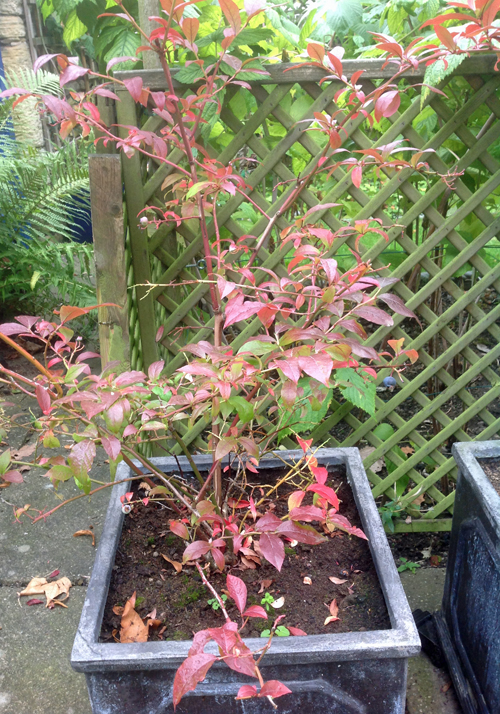

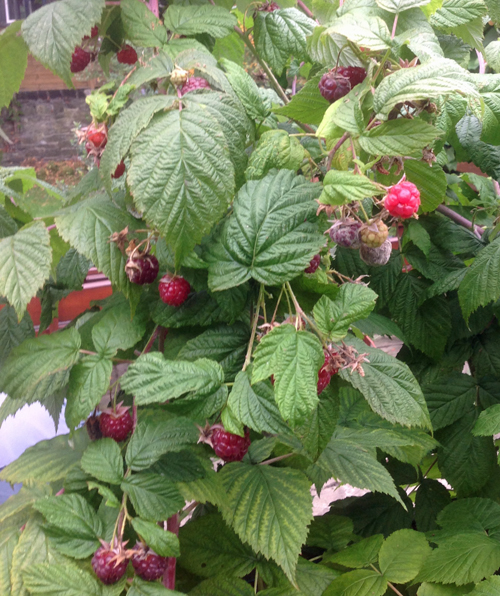
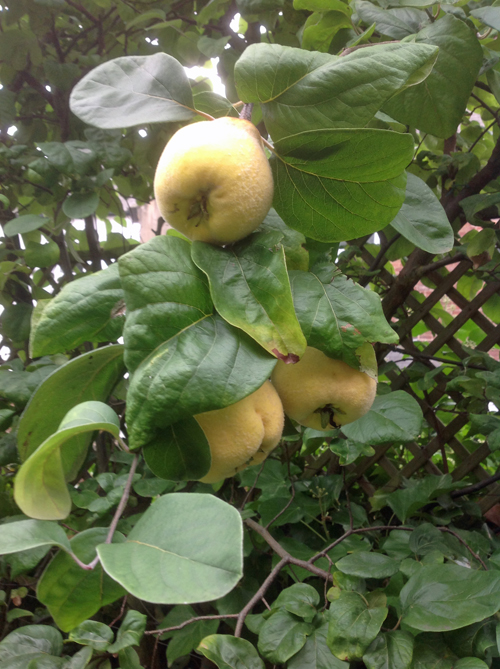
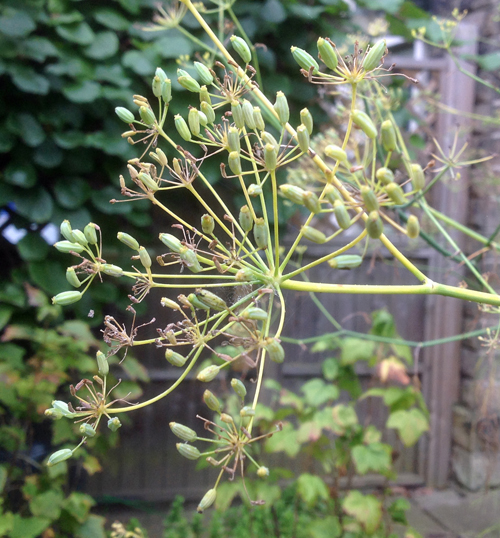
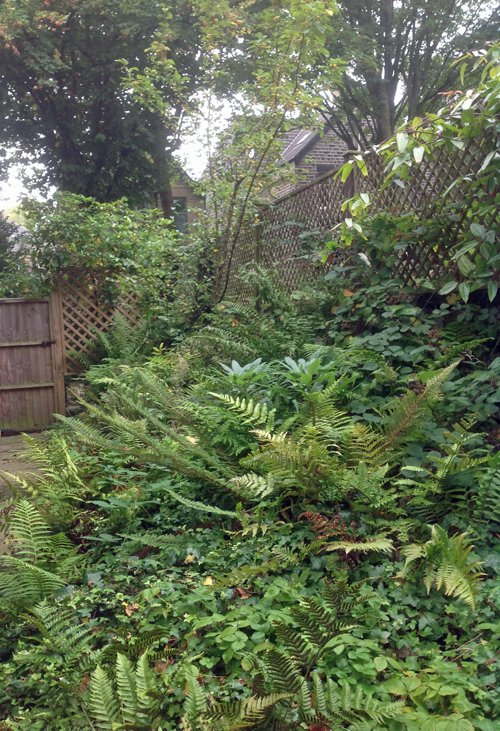
I look forward to seeing some exciting crab apple and quince creations on your blog
LikeLike
The crabapples went straight to a huge batch of homemade pectin. The imperfect quinces were cleaned up, chopped and are soaking in vodka for a lovely future quince liquor. Some others were distributed to friends, but a few left for me to ponder over. haven’t made up my mind yet what to do. No doubt you’ll read all about it in the near future!
LikeLike
My nephew, who ives and works in the rice growing area near Pavia, has been complaining about the rain and the unusual weather this season. Your home garden looks lush and and the mention of Ozark Blue blueberries made my mind wander back to an old band I once enjoyed, the Ozark Mountain Daredevils and my mispent youth. I am quite envious of those- the summer season here is far too hot here to grow blueberries. The quince look lovely and I look forward to reading about some quincy creations.
LikeLike
We had the same rainy tale from the place we stay at in Ivrea (which is closer to Turin, but it seems not that distant from Pavia). In fact, further south, they were saying that tourism was even down in Florence where you could actually walk around without hoards of people – quite unheard of! I know it is showing my age, but I remember the Ozark Mountain Daredevils! I also remember a wonderful family holiday in the Ozarks – not that much different than my own home in the hills of Pennsylvania – both part of the Appalachian mountain chain. We had wild high bush blueberries which we would forage – lovely childhood memories. It is one of the reasons I grow blueberries here – other than the fact that I love the fruit. Pondering quince creations…
LikeLike
The quinces look beautiful, quince paste, quince and apple crumble. I am sure they have all crossed your kitchen witch mind already!
LikeLike
I have to admit that a quince and apple crumble did cross my mind! Alas, I still have jars of quince paste left from last year’s larger harvest and I don’t want (yet) more on hand. I might make a quince jam, or just bake them… Still looking for the perfect recipe inspiration. Perhaps a quince tart tatin?
LikeLike
Yes! (Claps hands!) Along similar ideas, a quince upside down cake? Some Rosemary from your gorgeous garden thrown in? (Is that nuts?) and nuts! Looking forward to whatever you decide to do.
LikeLike
Why not a quince upside down cake AND a quince tart tatin? The little grey cells are working! Thanks for the inspiration – plus I still have some infused rosemary sugar waiting to be used…
LikeLiked by 1 person
I love your garden. Such gorgeous photos. One day I’d love a garden like this. We had a crab apple tree in my backyard growing up but my parents always told us they were inedible. They had no idea. They were city folk 🙂 that homemade pectin sounds amazing. Too bad I don’t live near you. I’m open to distributions.
LikeLike
Hi Amanda, Crabapples are very sour and have proportionately less flesh. They are fiddly to core and peel, but can be cooked. However, they must be mixed with sugar to be able to be eaten. Although my grandmother used to make apple butter from crabapples, I much prefer using tart eating apples for this. I can see why many people think they are inedible. I’ve now made the pectin and it was quite easy – watch out for my next post which gives a bit more i formation on how to do this.
LikeLike
Ah thanks. I thought they they just didn’t know. Can’t wait to see it!
LikeLike
Interesting how your English garden has counterparts to my Californian one. I have a native raspberry and a native huckleberry that is related to your blueberry. But I’m jealous because I’m not a talented gardener and I don’t get much fruit out of them. I enjoy looking at pictures of your gardening talents though.
LikeLike
I’m not really a talented gardener, but things seem to grow better here in Britain – perhaps the mild climate, perhaps the amount of rain. I have a commercial raspberry variety called Autumn Bliss. It is easy to grow and doesn’t require the same tying in and elaborate cane pruning procedures as summer raspberry varieties. All you have to do is cut them down at the end of the growing season. New canes will crop up the next year and raspberries will be produced on these new canes. I know you can get this variety in the US because we used to go to a farm to pick them when we lived in Wisconsin. My blueberries also don’t produce much – enough to freeze a bag’s worth so they are on hand for blueberry muffins…
LikeLike
So lovely that you grow raspberries in your backyard — they are my favourite fruit but it’s too hot here to grow them. How do you stop birds from eating them all?
LikeLike
I was just reading that they are now growing raspberries on Crete – another hot place. However, I suspect they are grown in upland plateau areas on the island where it might just be cool enough to grow berries. But, on the other hand, there might be varieties that tolerate heat. What they will not tolerate is drought. For some reason or another, the birds leave them alone. It might be the neighbourhood cats that seem to like our garden that responsible for that!
LikeLike
With all that fruit to come back to, I imagine you’ll be really busy preserving as much as possible. Your raspberries are far more productive than mine (also Autumn Bliss), so much so that I’ve planted some Polka canes. I’m hoping that extra watering next year will give mine a boost. One of my jobs to do is to weed around the raspberry canes and mulch them, maybe that will help too! (The birds leave mine alone as well and I’m sure it’s the cats that help.) Love the look of that Ozark Blue blueberry, one to look out for.
LikeLike
Ah, preserving… It gets frantic sometimes. It took my raspberries a few years before they started to really take off and produce lots. I discovered a way to get two crops out of them – at the end of the season, after all the raspberries are harvested, prune the canes down to knee height, leaving a few leaf stems. These will produce growth in the next year and give you an early summer crop of raspberries. Meanwhile, as Autumn Bliss does, it will produce new cans from the root which will tower above the growth from last year’s canes. When last year’s cans are finished producing, cut these down at soil level so that the new canes have more room and nutrients to grow. The new canes will then produce more raspberries late summer/early autumn. I usually make jam with the first crop in the summer and eat/freeze the second crop. For the most part, I leave them alone – only weeding out when it become necessary and giving them a boost of compost/manure in the spring. The Ozark Blue blueberry is really spectacular and looks like it will be a heavy cropper!
LikeLike
If only it was cool enough to grow quinces, I am thinking I should try anyways. Those raspberries look great too. I really need to think about planting some fennel for seed. It seems that I am behind the times with this.
LikeLike
We had an old quince tree in Pennsylvania and the summers were very hot there. I think they grow wherever apples grow and may need a bit of cool in winter. When I first put the fennel in the herb garden, I was thinking it would make a nice architectural plant – feathery fronds and height. However, I now use those fonds copiously in cooking and collect the seeds for use over winter. Be warned, it self seeds!
LikeLike